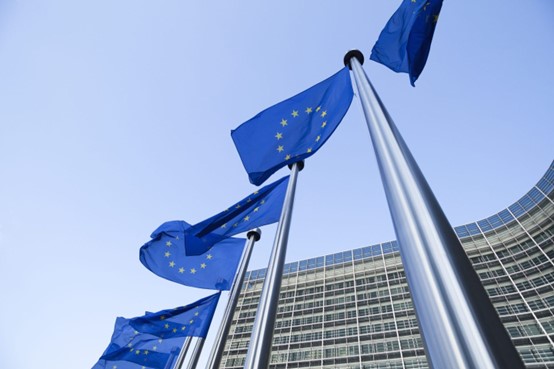
諾貝爾獎得主邁克爾·斯彭斯認為,歐洲的創新能力不足和生產力低下等問題,導致歐洲地區的經濟可能陷入滯脹,除非歐洲改變發展方向。
在項目辛迪加(Project Syndicate)上周三發表的一篇評論文章中,這位經濟學家表示,發達經濟體的長期生產力提高取決于以技術創新為主導的結構性改革。
他寫道:“這就是歐洲的根本問題所在:在從人工智能到半導體再到量子計算等諸多領域,美國甚至中國都遙遙領先于歐洲。”
歐洲的落后已經持續了多年。2008年,美國和歐元區的GDP基本持平。現在,世界銀行(World Bank)的數據顯示,美國經濟的規模超過歐元區約75%。
匯率波動確實導致這些數字有些失真。經過購買力調整后,過去20年,歐盟的經濟產值僅比美國落后了4%。即使在歐洲最疲軟的大型經濟體德國,消費者依舊樂觀。
與此同時,投資者日益意識到在全球經濟和金融市場中存在一個“美國例外主義”時代。
而形成鮮明對比的是,歐洲作為休閑中心的地位不斷上升,導致游客大量涌入,引起了本地人的反感,他們厭倦了游客堵塞街道、推高物價和占用住房。
胡佛研究所(Hoover Institution)高級研究員斯彭斯將歐洲的創新能力不足,歸咎于已經去中心化的研發領域獲得的投資不足、單一市場整合不徹底、缺乏算力等關鍵基礎設施,以及可用的風險投資和私募股權基金有限等。
他認為,歐洲可以克服這些障礙,并且擁有重要的優勢,例如來自本地高校的人才,以及為承擔風險的創業者提供必要經濟保障的社會保障系統等。
然而,他警告,如果歐洲沒有新經濟愿景,創新能力不足的傳統工業部門將繼續占據主導地位,而最優秀、最聰明的人會移民到其他國家。
斯彭斯寫道:“歐洲必須做出決定:它可以繼續維持當前的道路,這肯定會引發相對滯脹,或者它可以選擇一條截然不同的新道路。后者風險更高,但它也能帶來更高的潛在收益。”
但他表示,這個選擇似乎并不是政策制定者或選民們思考的首要問題,他呼吁歐洲的領導者們清晰展現歐洲經濟的現狀,以及新的經濟遠景能夠給歐洲帶來些什么。
他指出,歐洲可以這樣做,而且它在尋找新的可持續增長模式方面已經取得了成功。
“但首先,歐洲人必須回答一個簡單但至關重要的問題:未來十年,歐盟在創新、經濟、安全和韌性方面應該是什么樣子?”(財富中文網)
譯者:劉進龍
審校:汪皓
諾貝爾獎得主邁克爾·斯彭斯認為,歐洲的創新能力不足和生產力低下等問題,導致歐洲地區的經濟可能陷入滯脹,除非歐洲改變發展方向。
在項目辛迪加(Project Syndicate)上周三發表的一篇評論文章中,這位經濟學家表示,發達經濟體的長期生產力提高取決于以技術創新為主導的結構性改革。
他寫道:“這就是歐洲的根本問題所在:在從人工智能到半導體再到量子計算等諸多領域,美國甚至中國都遙遙領先于歐洲。”
歐洲的落后已經持續了多年。2008年,美國和歐元區的GDP基本持平。現在,世界銀行(World Bank)的數據顯示,美國經濟的規模超過歐元區約75%。
匯率波動確實導致這些數字有些失真。經過購買力調整后,過去20年,歐盟的經濟產值僅比美國落后了4%。即使在歐洲最疲軟的大型經濟體德國,消費者依舊樂觀。
與此同時,投資者日益意識到在全球經濟和金融市場中存在一個“美國例外主義”時代。
而形成鮮明對比的是,歐洲作為休閑中心的地位不斷上升,導致游客大量涌入,引起了本地人的反感,他們厭倦了游客堵塞街道、推高物價和占用住房。
胡佛研究所(Hoover Institution)高級研究員斯彭斯將歐洲的創新能力不足,歸咎于已經去中心化的研發領域獲得的投資不足、單一市場整合不徹底、缺乏算力等關鍵基礎設施,以及可用的風險投資和私募股權基金有限等。
他認為,歐洲可以克服這些障礙,并且擁有重要的優勢,例如來自本地高校的人才,以及為承擔風險的創業者提供必要經濟保障的社會保障系統等。
然而,他警告,如果歐洲沒有新經濟愿景,創新能力不足的傳統工業部門將繼續占據主導地位,而最優秀、最聰明的人會移民到其他國家。
斯彭斯寫道:“歐洲必須做出決定:它可以繼續維持當前的道路,這肯定會引發相對滯脹,或者它可以選擇一條截然不同的新道路。后者風險更高,但它也能帶來更高的潛在收益。”
但他表示,這個選擇似乎并不是政策制定者或選民們思考的首要問題,他呼吁歐洲的領導者們清晰展現歐洲經濟的現狀,以及新的經濟遠景能夠給歐洲帶來些什么。
他指出,歐洲可以這樣做,而且它在尋找新的可持續增長模式方面已經取得了成功。
“但首先,歐洲人必須回答一個簡單但至關重要的問題:未來十年,歐盟在創新、經濟、安全和韌性方面應該是什么樣子?”(財富中文網)
譯者:劉進龍
審校:汪皓
Europe is suffering from an innovation deficit and weak productivity, putting the region’s economy on a path to stagnation unless it changes course, according to Nobel laureate Michael Spence.
In a Project Syndicate op-ed on Wednesday, the economist said long-term productivity growth in advanced economies depends on structural change, led by technological innovation.
“This is where Europe’s principal problem lies: in a range of areas, from artificial intelligence to semiconductors to quantum computing, the US and even China are leaving Europe in the dust,” he wrote.
Europe’s lagging performance has been going on for years. In 2008, U.S. GDP and the eurozone’s GDP were roughly equal. Now, the U.S. economy is about 75% bigger than the eurozone’s, according to World Bank data.
To be sure, currency fluctuations have skewed the numbers. Adjusted for purchasing power, the EU output fell only 4% behind that of the U.S. over the last 20 years. And even in Europe’s weakest big economy, German consumers are still feeling upbeat.
Meanwhile, investors have increasingly recognized an era of “American exceptionalism” in the global economy and financial markets.
That’s contrasted with Europe’s growing status as a center of leisure, so much so that overwhelming hordes of tourists have sparked a backlash among locals fed up with vacationers clogging streets, running up prices, and occupying homes.
Spence, who is a senior fellow at the Hoover Institution, blamed Europe’s innovation deficit on underinvestment in an already decentralized R&D landscape, incomplete integration of the single market, lack of key infrastructure like computing power, and limited availability of VC and private equity funds.
Europe can overcome these obstacles and has important advantages, such as the talent coming from its universities and a social safety net that provides the economic security needed for entrepreneurial risk-taking, he noted.
Without a new economic vision, however, traditional industrial sectors that are less innovative will continue dominating, while the best and the brightest will migrate to other countries, he warned.
“Europe must decide: it can remain on its current course, which is sure to lead to relative stagnation, or it can chart an entirely new path,” Spence wrote. “The latter approach is riskier, but it also holds far more upside potential.”
But this choice doesn’t appear to be top of mind among policymakers or voters, he said, urging leaders to offer a clear picture of what the status quo or a new economic vision would bring.
Europe can do this and already found success in targeting new sustainable growth models, he pointed out.
“But first, Europeans must answer a simple but critical question: What should the EU look like—in terms of innovation, the economy, security, and resilience—in a decade?”






